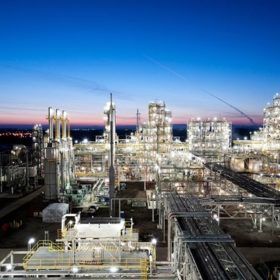
The Norwegian polysilicon supplier – which has most of its manufacturing operations on U.S. soil – cannot give any estimate on when its solar material production lines will return, and has been left entirely dependent on the semiconductor products made by its Montana facility.
Will Norwegian polysilicon manufacturer REC Silicon restart production at its U.S. facility in Moses Lake, Washington state in 2022?
The second-quarter figures released by the company this morning based a long-term prediction for operations on that assumption but information elsewhere in the update as much as admitted the board had pulled a figure out of the air.
The trade measures imposed by Beijing on U.S.-made polysilicon imports – introduced in retaliation for President Trump’s Section 201 trade tariffs on Chinese solar products – this month forced the Moses Lake facility into a long-term shutdown REC expects to last for at least the remainder of the year.
The Norwegian manufacturer had twice postponed the drastic measure, with the latest such step taken in the hope Trump and opposite number Ji Xinping would make progress towards resolving their trade war at the G20 meeting held in Osaka at the end of last month.
With nothing but platitudes emerging from a meeting held between the two in Japan, the outlook for REC’s silicon operations was summed up in one sober line of its Q2 figures: “The timing or outcome of any potential resolution remains uncertain”.
Trade war stand-off
That not only spelt bad news for the latest 100 Moses Lake workers laid off this month but leaves REC Silicon ASA’s future almost entirely dependent on the polysilicon it produces for semiconductors. That reality was laid bare in three-month figures which showed the solar materials business contributed a $9.4 million loss to an EBITDA return of $500,000 salvaged by $15.2 million in revenue from the semiconductor product made at REC’s operation in Butte, Montana.
The optimistic decision to delay the Moses Lake shutdown also came with a bill as Trump and Xi’s intransigence and higher-than-expecting shuttering costs added $1.7 to the $18.5 cost of manufacturing each kilogram of the company’s fluidized bed reactor output of 980 MT during the second quarter.
REC expects to run down the remainder of its 1,435 MT solar grade polysilicon inventory in the remainder of the year, having cleared 1,059 MT in the last three months.
Other problems
With an 18,000 MT facility described by its owners as the world’s largest granular polysilicon manufacturing center not expected to produce any output for at least the rest of the year, there was little respite from the market for silane gas used in PV cell manufacturing, with the company citing low sales into PV applications.
And the Chinese poly producing joint venture set up with Shaanxi Non-ferrous Tian Hong New Energy Co Ltd provided little relief either, as it drained a further $3.1 million in equity from the Norwegian partner and is operating at less than full capacity after a problem closed one of its two silane units in February. The unit is expected to restart production in the fourth quarter.
With REC noting the current global polysilicon glut will mean “high-cost suppliers are expected to exit the market”, the company’s fate appears to rest on semiconductor demand and there is a further worrying caveat for investors. The Norwegian tax authorities are continuing to question the manufacturer’s returns for 2009-11 and REC is also appealing taxable property estimates made by Grant County in Washington state for 2012-15, with regards to its Moses Lake facility.
Lắp đặt điện mặt trời Khải Minh Tech
https://ift.tt/2X7bF6x
0906633505
info.khaiminhtech@gmail.com
80/39 Trần Quang Diệu, Phường 14, Quận 3
Lắp đặt điện mặt trời Khải Minh Tech
https://ift.tt/2ZH4TRU
Không có nhận xét nào:
Đăng nhận xét